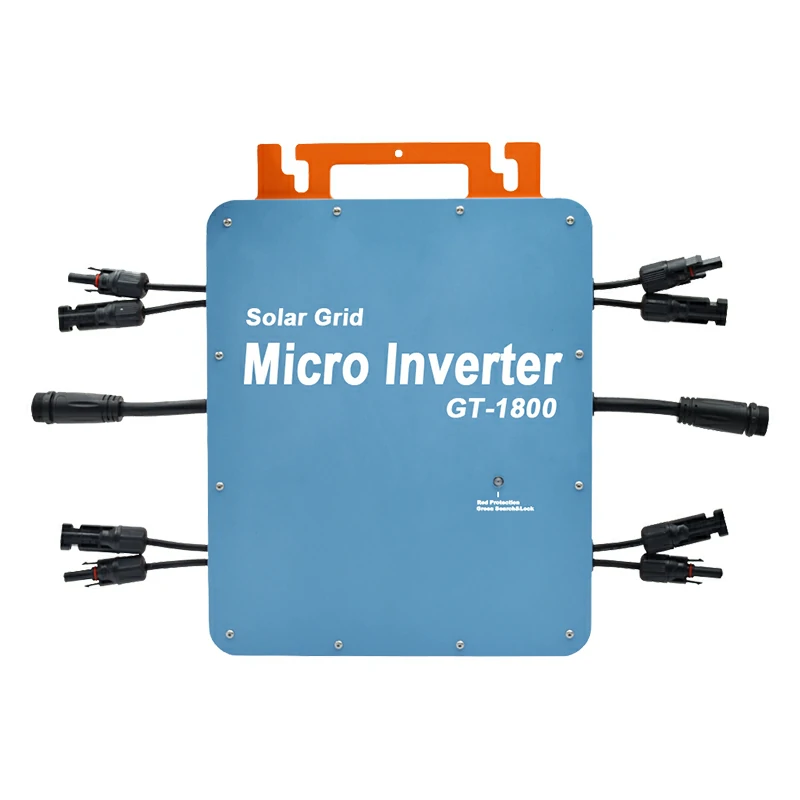Introduction
As the world increasingly turns to renewable energy sources, solar energy has emerged as a leading option for sustainable power generation. At the heart of every solar energy system lies the solar inverter, a crucial component that converts the direct current (DC) produced by solar panels into alternating current (AC) for household use. This article aims to clarify the roles of solar inverters in grid-tied and off-grid systems, helping potential buyers make informed decisions about their solar inverter purchases.
Understanding Solar Inverters
Solar inverters play a vital role in any solar energy system. They are responsible for converting the DC electricity generated by solar panels into AC electricity, which is suitable for use in homes and businesses. Without an inverter, the energy produced by solar panels would be unusable for most electrical appliances.
In addition to conversion, modern solar inverters also come equipped with features that enhance system performance and safety, such as monitoring capabilities and grid management functions.
Types of Solar Inverters
When it comes to solar inverters, there are primarily two types: grid-tied inverters and off-grid inverters. Each type serves specific needs and comes with its own set of advantages and disadvantages.
Grid-Tied Inverters
Grid-tied inverters, also known as grid-connected inverters, are designed to work in conjunction with the utility grid. They allow homeowners to feed excess electricity back into the grid, often through a process called net metering.
Advantages
- Cost-Effectiveness: Grid-tied systems typically do not require batteries, making them more affordable to install and maintain.
- Energy Selling: Homeowners can sell excess energy generated by their solar panels back to the utility company, potentially lowering their electricity bills.
- Lower Installation Costs: The absence of battery storage reduces initial setup costs.
Disadvantages
- Dependency on the Grid: If there is a power outage, grid-tied systems will not provide electricity unless there is a backup system in place.
- Limited Functionality: These systems may not be suitable for areas with unreliable grid access or frequent outages.
Off-Grid Inverters
Off-grid inverters are designed for systems that operate independently of the utility grid. These systems typically include battery storage to ensure a reliable power supply even when sunlight is not available.
Advantages
- Independence: Off-grid systems provide complete autonomy from the utility grid, making them ideal for remote locations.
- Reliable Power Supply: They ensure a consistent power supply regardless of grid availability.
- No Electricity Bills: Homeowners can achieve self-sufficiency and eliminate monthly electricity costs.
Disadvantages
- Higher Initial Costs: Off-grid systems require batteries for energy storage, which increases upfront investment.
- Maintenance Needs: Batteries require regular maintenance and eventual replacement, adding to long-term costs.
Comparative Analysis: Grid-Tied vs. Off-Grid
Energy Access
Grid-tied systems allow homeowners to draw power from the utility grid when their solar panels are not producing enough energy. In contrast, off-grid systems rely solely on stored energy from batteries, which can limit available power during periods of low sunlight.
Cost Considerations
While grid-tied systems generally have lower initial costs due to the lack of batteries, off-grid systems may offer long-term savings by eliminating monthly electricity bills. Buyers should consider their budget constraints and financial goals when deciding between these two options.
Reliability and Power Availability
Grid-tied systems are dependent on the utility grid; therefore, they do not provide power during outages unless equipped with backup solutions. Off-grid systems offer reliable power availability but require careful management of battery storage to ensure sufficient energy supply.
Choosing the Right System for Your Needs
When deciding between a grid-tied or off-grid solar inverter system, several factors should be considered:
- Location: Assess whether you have access to a reliable utility grid.
- Budget Constraints: Determine your initial investment capacity and long-term financial goals.
- Energy Needs: Analyze your household’s energy consumption patterns to choose an appropriate system size.
Additionally, consider exploring options like micro inverters, which can optimize individual solar panel performance within both grid-tied and off-grid configurations.
Conclusion
In summary, understanding the roles of solar inverters—whether they are grid-connected or off-grid—is essential for anyone looking to invest in solar energy solutions. Each type has its unique advantages and disadvantages that cater to different needs and preferences. By carefully assessing your requirements and consulting with professionals, you can make an informed decision that aligns with your energy goals.
For those considering purchasing a solar inverter, remember that options like the grid tie micro inverter can provide additional flexibility and efficiency within your chosen system. Take the time to evaluate your specific needs before making a commitment—your choice will significantly impact your energy independence and financial savings for years to come. If you would like me to continue or expand on any specific sections or topics within this article, please let me know!




